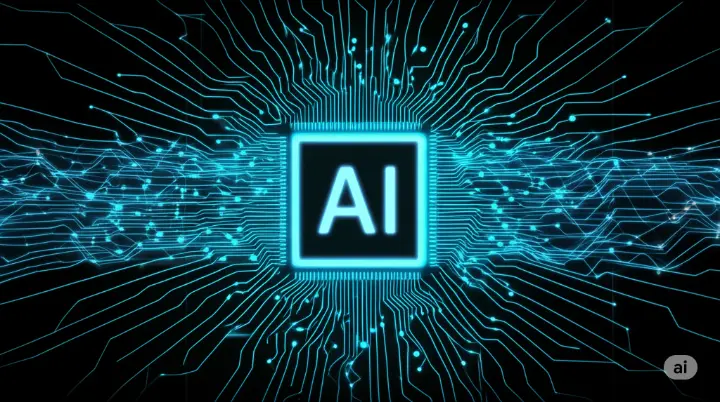The buzz around AI's ability to code has been deafening lately. You've probably seen the headlines promising a future where AI takes over the tedious parts of software development, freeing up human engineers for more creative tasks.
Sounds amazing, right? But a recent, insightful study from researchers at MIT's Computer Science and Artificial Intelligence Laboratory (CSAIL) offers a more nuanced perspective, and it's one we at Trixly AI Solutions found particularly relevant.
Instead of focusing solely on the impressive code generation capabilities of current AI, the MIT team dug deep into the real roadblocks preventing truly autonomous software engineering.
Their paper, aptly titled “Challenges and Paths Towards AI for Software Engineering,” paints a picture of significant progress, but also highlights the long and complex journey ahead.
The Parallels to the Sewing Machine
To truly understand this dynamic, it’s helpful to look back at history. In their groundbreaking book, Why Nations Fail, economists Daron Acemoglu and James Robinson use the example of the sewing machine to illustrate a crucial point about technology and innovation.
The sewing machine was a revolutionary invention that promised to make textile production faster and more efficient. In some nations, the new technology was embraced, leading to new industries, a rise in living standards, and widespread prosperity.
But in others, the ruling elites - who benefited from the old, manual way of doing things - resisted the change. They feared that this new technology would disrupt their power, leading to a loss of control and a shift in economic and political power.
This historical example provides a powerful lens through which to view the current conversation about AI in software engineering. Just like the sewing machine, AI is a disruptive technology.
It’s not just about a simple tool; it’s about a new way of working that could fundamentally change the power dynamics and skill sets of an entire industry. The MIT study essentially argues that we are at this critical juncture, and the challenges we face aren't just technical - they are also institutional and cultural.

The Hype vs. The Reality: A Look at the Marketing Machine
While the MIT researchers offer a measured and pragmatic view, the public discourse is often dominated by a far more sensational narrative. CEOs and leaders from major AI companies like OpenAI and Anthropic have made bold predictions about AI's capabilities, sometimes stating that AI will soon be writing "90% of the code" or "essentially all of the code."
It's important to understand the motivation behind these claims. For these companies, the narrative that AI is on the verge of replacing entire jobs is a powerful marketing tactic.
The promise of replacing expensive human labor with a single, highly capable AI product is a compelling sales pitch for businesses. After all, if a company were to market its AI as a "mediocre sidekick" or an "okay autocomplete tool," it would be far less likely to attract the investment and customers needed to compete in this fast-paced market. The hype sells the product, even if the reality is still far more complex.
This is why the MIT study is so vital. It acts as a grounding force, pulling the conversation back from marketing-driven hyperbole to the tangible, real-world challenges that still need to be solved.

Beyond the "Undergrad Programming"
One of the key takeaways from the study is that we often oversimplify what software engineering actually entails. As MIT Professor Armando Solar‑Lezama, a senior author of the study, points out, the common perception often boils down to "someone hands you a spec for a little function and you implement it, or solving LeetCode-style programming interviews."
The reality is far more intricate. Real-world software development involves:
- Refactoring complex codebases: Polishing designs and improving maintainability.
- Large-scale migrations: Moving massive systems to new technologies.
- Rigorous testing and analysis: Hunting down elusive bugs and security flaws.
- The often-unglamorous work of maintenance: Documenting legacy code, reviewing changes, and ensuring everything keeps running smoothly.
Current AI, while excelling at generating snippets of code, struggles with these broader, more complex challenges. The benchmarks we use to evaluate AI in coding, like SWE-Bench (which focuses on patching GitHub issues), often don't capture the scale and intricacies of real-world software engineering.
The Human-Machine Communication Gap
Another crucial point the MIT researchers emphasize is the limited interaction between humans and AI coding tools. Currently, it's often a one-way street: you ask for code, and you get a large, unstructured file.
There's little insight into the AI's confidence in its output, making it difficult to trust blindly. As Alex Gu, the study's first author, notes, there isn't a clear "channel for the AI to expose its own confidence - ‘this part’s correct … this part, maybe double‑check’."
This lack of transparency and control means developers risk adopting AI-generated code that looks good on the surface but might contain subtle errors or inconsistencies with a project's specific needs. Knowing when the AI should defer to a human for clarification is also a critical missing piece.
The Challenge of Scale and Uniqueness
Large, industry-scale codebases present a significant hurdle for current AI models. While foundation models learn from vast amounts of public code on platforms like GitHub, every company's codebase has its own unique conventions, styles, and architectural patterns.
This "out-of-distribution" problem leads to AI-generated code that might call non-existent functions, violate internal rules, or break existing systems. The study highlights the issue of AI "hallucinations," where the generated code looks plausible but doesn't align with the specific context of a company's internal workings.
Furthermore, AI often struggles with code retrieval, pulling code based on similar names rather than actual functionality. This can lead to incorrect suggestions and inefficiencies.
A Call for Collaboration, Not Replacement
The MIT study isn't about dismissing the potential of AI in software development. Instead, it's a realistic assessment of the current limitations and a call for a community-driven effort to address them. The researchers advocate for:
- Richer datasets: Capturing the nuances of how developers actually write and refine code.
- Shared evaluation suites: Measuring progress on more complex tasks like refactoring and large-scale code changes.
- Transparent tooling: Allowing AI to express uncertainty and enabling better human-AI collaboration.
The ultimate goal, as the researchers emphasize, isn't to replace programmers but to amply their abilities. By taking on the more tedious and repetitive tasks, AI can free up human engineers to focus on the creativity, strategy, and ethical considerations that require uniquely human skills.
What This Means for the Future of Software Development
We believe this MIT study offers valuable insights into the future of our field. While AI will undoubtedly play an increasingly significant role in software development, it's clear that human expertise remains essential.
The focus should be on building tools and workflows that foster effective collaboration between humans and AI, leveraging the strengths of both.
The path towards truly autonomous software engineering is a marathon, not a sprint. By acknowledging the current challenges and working together to overcome them, we can unlock the full potential of AI to empower developers and drive innovation. The future of coding isn't about AI taking over; it's about humans and AI working together to build a better digital world.